-
 Bitcoin
Bitcoin $115500
-2.42% -
 Ethereum
Ethereum $3669
-4.98% -
 XRP
XRP $2.962
-5.84% -
 Tether USDt
Tether USDt $1.000
0.01% -
 BNB
BNB $776.6
-3.18% -
 Solana
Solana $168.7
-6.83% -
 USDC
USDC $1.000
0.01% -
 Dogecoin
Dogecoin $0.2058
-7.89% -
 TRON
TRON $0.3256
-0.39% -
 Cardano
Cardano $0.7242
-7.45% -
 Hyperliquid
Hyperliquid $40.19
-7.21% -
 Sui
Sui $3.546
-8.07% -
 Stellar
Stellar $0.3919
-8.08% -
 Chainlink
Chainlink $16.60
-7.92% -
 Bitcoin Cash
Bitcoin Cash $564.6
-3.00% -
 Hedera
Hedera $0.2474
-9.31% -
 Avalanche
Avalanche $21.93
-8.74% -
 Ethena USDe
Ethena USDe $1.001
-0.02% -
 Toncoin
Toncoin $3.481
0.22% -
 UNUS SED LEO
UNUS SED LEO $8.933
-0.25% -
 Litecoin
Litecoin $105.3
-4.98% -
 Shiba Inu
Shiba Inu $0.00001228
-6.13% -
 Polkadot
Polkadot $3.652
-5.97% -
 Uniswap
Uniswap $9.297
-8.52% -
 Monero
Monero $306.7
-2.66% -
 Dai
Dai $0.9999
0.00% -
 Bitget Token
Bitget Token $4.396
-3.09% -
 Cronos
Cronos $0.1380
-6.60% -
 Pepe
Pepe $0.00001058
-8.52% -
 Aave
Aave $258.3
-7.43%
Is TRIX a good indicator for beginners in crypto trading?
The TRIX indicator helps crypto traders identify trend reversals by smoothing price data and highlighting momentum shifts, making it a valuable tool for beginners.
Jul 31, 2025 at 06:16 pm
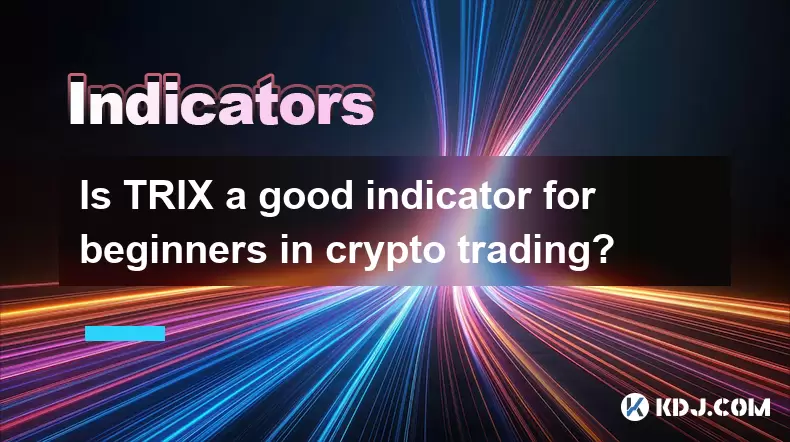
Understanding the TRIX Indicator in Cryptocurrency Trading
The TRIX (Triple Exponential Average) indicator is a momentum oscillator designed to filter out short-term price fluctuations and highlight longer-term trends. It calculates the rate of change of a triple-smoothed exponential moving average, making it particularly sensitive to trend reversals while minimizing noise. In the context of cryptocurrency trading, where price volatility is high and trends can shift rapidly, TRIX can offer insights into the strength and sustainability of price movements. For beginners, the appeal lies in its ability to provide clear signals without overwhelming complexity. However, understanding how it functions is essential before relying on it for trading decisions.
The core mechanism of TRIX involves applying an exponential moving average (EMA) three times to price data, then measuring the percentage change in that triple-smoothed average. This process reduces the impact of minor price swings, allowing traders to focus on significant trend shifts. The resulting line oscillates around a zero line, with values above zero indicating bullish momentum and values below suggesting bearish conditions. A key feature is the signal line, often a 9-period EMA of the TRIX line, which traders use to generate buy and sell signals when it crosses the main TRIX line.
How TRIX Generates Trading Signals
TRIX produces actionable signals through crossovers and divergences, both of which are accessible to new traders once properly understood.
- When the TRIX line crosses above the signal line, it is interpreted as a potential buy signal, indicating upward momentum is strengthening.
- Conversely, when the TRIX line crosses below the signal line, it may signal a bearish shift, suggesting a possible sell or short opportunity.
- Bullish divergence occurs when the price makes a lower low, but the TRIX indicator forms a higher low, hinting at weakening downward momentum.
- Bearish divergence happens when the price reaches a higher high, yet TRIX records a lower high, signaling potential trend exhaustion.
These signals can be particularly useful in range-bound or trending crypto markets, where identifying momentum shifts early can improve entry and exit timing. However, beginners must remember that no indicator is infallible, and false signals can occur, especially during periods of low volume or sudden news-driven price spikes.
Setting Up TRIX on a Crypto Trading Platform
Most cryptocurrency trading platforms, such as TradingView, Binance, or Coinbase Advanced Trade, support the TRIX indicator. Adding it to your chart involves straightforward steps:
- Open your preferred trading interface and select the cryptocurrency pair you wish to analyze.
- Navigate to the indicators or studies menu, typically located at the top of the chart.
- Search for “TRIX” in the indicator library and select it.
- Configure the input length, usually set to 14 or 18 by default, which determines the sensitivity of the indicator.
- Adjust the signal line period, commonly set to 9, to fine-tune crossover signals.
- Choose visual preferences such as line color and thickness for better readability.
Once applied, the TRIX oscillator will appear below or alongside the main price chart. Beginners should practice with historical data to observe how TRIX responded to past price movements before using it in live trading. Backtesting allows new traders to gain confidence in interpreting signals without risking capital.
Advantages of TRIX for Beginner Traders
One of the primary benefits of TRIX for newcomers is its noise reduction capability. Unlike simple moving averages or raw price action, TRIX smooths data extensively, helping beginners avoid overreacting to minor price fluctuations. This is especially valuable in highly volatile crypto assets like Bitcoin or meme coins, where sudden spikes and dips are common.
Another advantage is the clear visual structure of the indicator. The zero line acts as a natural threshold, making it easier to distinguish between bullish and bearish phases. The inclusion of a signal line further simplifies decision-making by automating part of the analysis. For traders still learning to read charts, this structured approach reduces ambiguity.
TRIX also integrates well with other technical tools. Beginners can combine it with support/resistance levels or volume indicators to confirm signals. For example, a TRIX crossover occurring near a key support level may carry more weight than one in the middle of a range.
Potential Pitfalls and Limitations
Despite its usefulness, TRIX is not without drawbacks, especially for inexperienced traders. Because it relies on triple smoothing, the indicator can lag behind price action, meaning signals may appear after a trend has already begun. This delay can result in missed entry points or late exits, reducing profitability.
Another issue is whipsaw signals in sideways markets. When crypto prices consolidate, TRIX may generate multiple crossovers that lead to false entries. Beginners might interpret these as valid signals and incur losses from frequent, unprofitable trades.
Additionally, TRIX does not account for fundamental factors such as regulatory news, exchange outages, or macroeconomic events, which heavily influence crypto prices. Relying solely on TRIX without considering the broader context can lead to poor decision-making.
Best Practices for Using TRIX as a Beginner
To maximize the effectiveness of TRIX, beginners should adopt a disciplined approach:
- Use TRIX in conjunction with trend-following tools like the 200-day moving average to ensure alignment with the broader market direction.
- Apply it to higher timeframes such as the 4-hour or daily charts, where signals are more reliable than on volatile lower timeframes.
- Set up price alerts on TRIX crossovers to stay informed without constant monitoring.
- Avoid trading every signal; instead, wait for confirmation from volume spikes or candlestick patterns like engulfing bars.
Paper trading or using a demo account with TRIX can help solidify understanding before committing real funds.
Frequently Asked Questions
What is the ideal TRIX period setting for crypto trading?
The default setting of 14 periods is widely used and suitable for most beginners. However, shorter periods like 9 increase sensitivity and are better for short-term trading, while longer settings like 20 reduce noise and suit swing traders.
Can TRIX be used for all cryptocurrencies?
Yes, TRIX can be applied to any crypto asset, but it performs best on highly liquid coins like Bitcoin or Ethereum. Low-volume altcoins may produce erratic signals due to price manipulation or thin order books.
How does TRIX differ from MACD?
While both are momentum oscillators, TRIX uses triple-smoothed EMA, whereas MACD uses the difference between two EMAs. TRIX tends to generate fewer signals and is less prone to whipsaws, making it simpler for beginners.
Should I use TRIX on its own or with other indicators?
It is not advisable to rely solely on TRIX. Combining it with volume indicators, RSI, or Bollinger Bands improves accuracy by providing multiple layers of confirmation.
Disclaimer:info@kdj.com
The information provided is not trading advice. kdj.com does not assume any responsibility for any investments made based on the information provided in this article. Cryptocurrencies are highly volatile and it is highly recommended that you invest with caution after thorough research!
If you believe that the content used on this website infringes your copyright, please contact us immediately (info@kdj.com) and we will delete it promptly.
- Rarible Integrates Somnia Blockchain: A New Era for NFT Gaming?
- 2025-08-01 12:30:11
- JPMorgan, Coinbase, and Crypto Mainstream: A New York Minute on the Future of Finance
- 2025-08-01 12:30:11
- Altcoin Season in Full Swing: Market Shift and Key Metrics to Watch
- 2025-08-01 12:50:12
- Ripple, XRP, and RLUSD: Navigating Growth and Innovation
- 2025-08-01 08:30:37
- Tether's Triumph: Profits, US Initiatives, and Stablecoin Supremacy
- 2025-08-01 09:11:00
- Ethereum, ZK-VMs, and Quantum Resistance: A New Era for Blockchain Security?
- 2025-08-01 09:30:12
Related knowledge

Does the KDJ indicator work well for low-liquidity crypto assets?
Aug 01,2025 at 02:01pm
Understanding the KDJ Indicator in Cryptocurrency TradingThe KDJ indicator is a momentum oscillator derived from the Stochastic Oscillator, widely use...
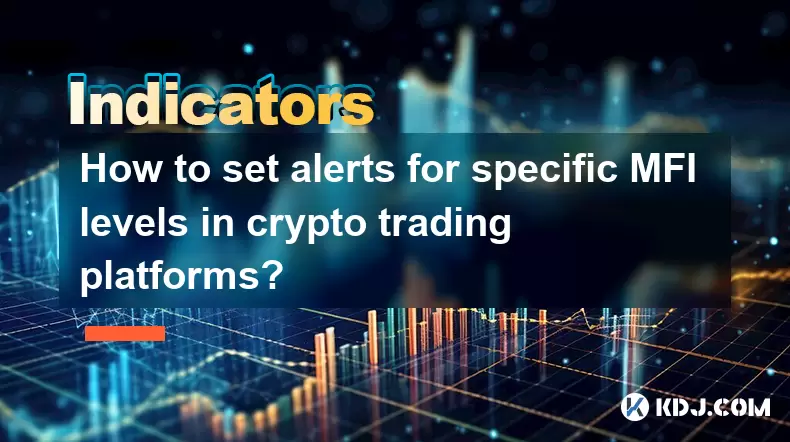
How to set alerts for specific MFI levels in crypto trading platforms?
Aug 01,2025 at 12:42pm
Understanding the Money Flow Index (MFI) in Crypto TradingThe Money Flow Index (MFI) is a momentum oscillator that measures the flow of money into and...
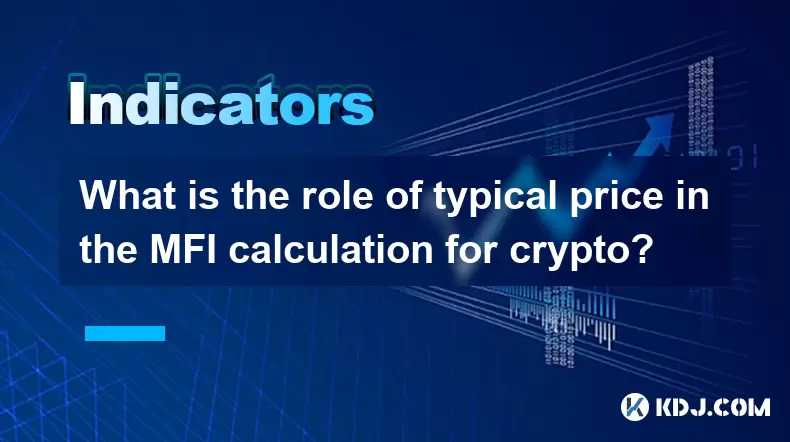
What is the role of typical price in the MFI calculation for crypto?
Aug 01,2025 at 12:21pm
Understanding the Typical Price in MFI for Cryptocurrency AnalysisThe Typical Price plays a crucial role in the calculation of the Money Flow Index (M...
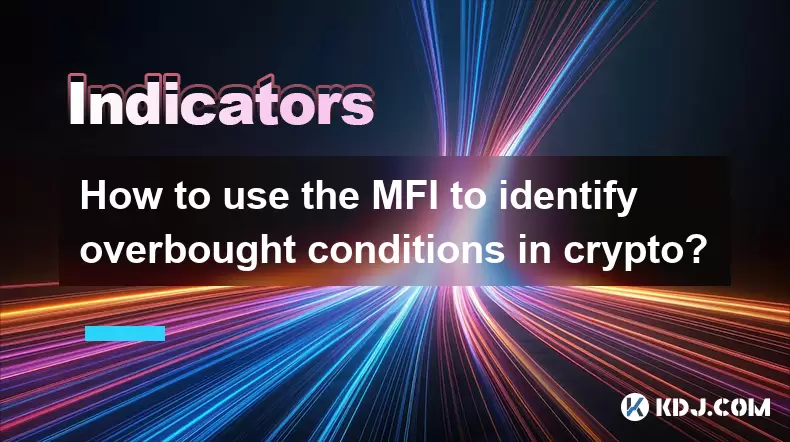
How to use the MFI to identify overbought conditions in crypto?
Aug 01,2025 at 10:49am
Understanding the Money Flow Index (MFI) in Cryptocurrency TradingThe Money Flow Index (MFI) is a momentum oscillator that measures the inflow and out...
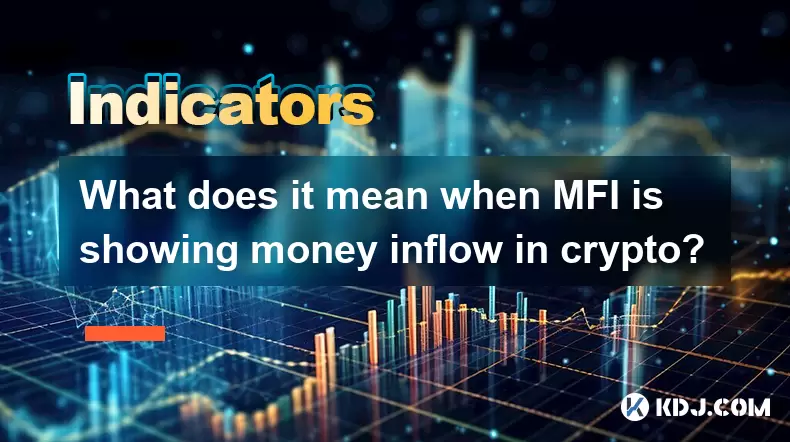
What does it mean when MFI is showing money inflow in crypto?
Aug 01,2025 at 01:28pm
Understanding the MFI Indicator in Cryptocurrency MarketsThe Money Flow Index (MFI) is a technical oscillator that measures the flow of money into and...
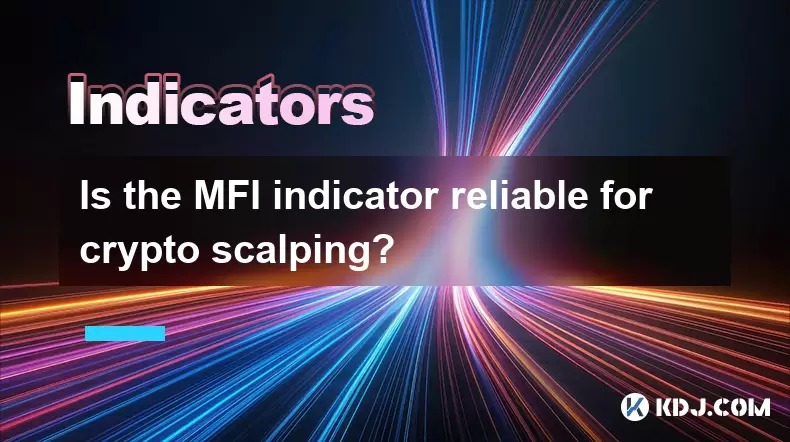
Is the MFI indicator reliable for crypto scalping?
Aug 01,2025 at 11:00am
Understanding the MFI Indicator in Cryptocurrency TradingThe Money Flow Index (MFI) is a momentum oscillator that measures the flow of money into and ...

Does the KDJ indicator work well for low-liquidity crypto assets?
Aug 01,2025 at 02:01pm
Understanding the KDJ Indicator in Cryptocurrency TradingThe KDJ indicator is a momentum oscillator derived from the Stochastic Oscillator, widely use...

How to set alerts for specific MFI levels in crypto trading platforms?
Aug 01,2025 at 12:42pm
Understanding the Money Flow Index (MFI) in Crypto TradingThe Money Flow Index (MFI) is a momentum oscillator that measures the flow of money into and...

What is the role of typical price in the MFI calculation for crypto?
Aug 01,2025 at 12:21pm
Understanding the Typical Price in MFI for Cryptocurrency AnalysisThe Typical Price plays a crucial role in the calculation of the Money Flow Index (M...

How to use the MFI to identify overbought conditions in crypto?
Aug 01,2025 at 10:49am
Understanding the Money Flow Index (MFI) in Cryptocurrency TradingThe Money Flow Index (MFI) is a momentum oscillator that measures the inflow and out...

What does it mean when MFI is showing money inflow in crypto?
Aug 01,2025 at 01:28pm
Understanding the MFI Indicator in Cryptocurrency MarketsThe Money Flow Index (MFI) is a technical oscillator that measures the flow of money into and...

Is the MFI indicator reliable for crypto scalping?
Aug 01,2025 at 11:00am
Understanding the MFI Indicator in Cryptocurrency TradingThe Money Flow Index (MFI) is a momentum oscillator that measures the flow of money into and ...
See all articles

























































































